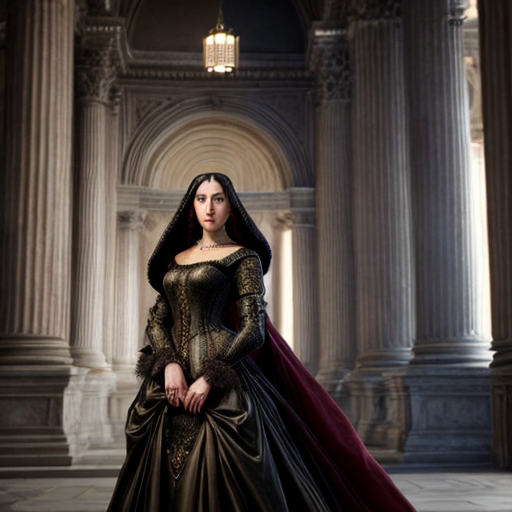The Renaissance and Artistic Expression: An Introduction to the Historical Context
During the Renaissance, artists played a crucial role in reflecting the ideas and historical events of the time through their work. Each artist's unique style and perspective were influenced by the cultural, political, and intellectual movements of the era. For example, Leonardo da Vinci's fascination with science and anatomy is evident in his detailed and anatomically accurate paintings. Michelangelo's sculptures, such as David and the Sistine Chapel ceiling, reflect the humanist ideals of the period. Artists like Raphael captured the spirit of the Renaissance through their harmonious compositions and classical influences. By examining how each artist's work reflects the ideas and historical events of the Renaissance, we gain a deeper understanding of the cultural significance of their creations.
The Humanist Movement and its Influence on Renaissance Art
Leonardo da Vinci: Leonardo's work reflected the ideas of the Renaissance through his focus on human anatomy and scientific observation. His detailed anatomical drawings and studies of the human body were influenced by the renewed interest in classical knowledge and the belief in the importance of understanding the natural world. Additionally, his famous painting, 'The Last Supper,' reflects the religious and philosophical ideas of the time, as it captures the moment of Christ's revelation to his disciples. Michelangelo: Michelangelo's work during the Renaissance reflected the ideas of humanism and the celebration of the individual. His sculptures, such as 'David' and 'The Pieta,' showcased the idealized human form and emphasized the importance of human potential. Furthermore, his work on the Sistine Chapel ceiling depicted biblical stories and figures, reflecting the religious themes prevalent during the Renaissance. Raphael: Raphael's work reflected the ideas of the Renaissance through his emphasis on harmony, balance, and idealized beauty. His paintings, such as 'The School of Athens,' showcased the importance of knowledge and intellectual pursuits during this period. The painting depicts various philosophers, scientists, and artists from different time periods, symbolizing the synthesis of classical knowledge and contemporary ideas. Donatello: Donatello's sculptures during the Renaissance reflected the revival of classical art and the celebration of the human form. His bronze statue of David, created in the early 15th century, was the first free-standing nude sculpture since ancient times. This work showcased the Renaissance fascination with the human body and the belief in the potential of the individual. Titian: Titian's paintings during the Renaissance reflected the shift towards a more naturalistic style and the exploration of color and light. His use of vibrant colors and his ability to capture the effects of light and shadow in his works, such as 'Bacchus and Ariadne,' showcased the advancements in painting techniques during this period. Additionally, his paintings often depicted mythological or biblical scenes, reflecting the interest in classical and religious themes.
The Humanist movement had a profound influence on Renaissance art, shaping the themes and subjects depicted by artists of the time. Humanist ideals, such as the celebration of human potential and the importance of individualism, are reflected in the works of artists like Botticelli and Titian. Botticelli's Birth of Venus, for example, embodies the humanist belief in the beauty and grace of the human form. Titian's portraits capture the individuality and personality of his subjects, showcasing the humanist emphasis on the uniqueness of each person. By exploring how each artist's work reflects the ideas of the Humanist movement, we can appreciate the impact of this intellectual and cultural shift on Renaissance art.
Religious Themes and Symbolism in Renaissance Art: A Reflection of the Era's Spiritual Climate

Religious themes and symbolism played a significant role in Renaissance art, serving as a reflection of the era's spiritual climate. Artists of the time often drew inspiration from biblical stories and Christian teachings, using their work to convey religious messages and evoke spiritual contemplation. The religious fervor of the period, marked by the Protestant Reformation and the Catholic Counter-Reformation, influenced the subject matter and symbolism employed by artists. For instance, the works of artists like Michelangelo and Caravaggio often depicted scenes from the Bible with a sense of drama and emotion, reflecting the intense religious fervor of the time.
In addition to biblical narratives, Renaissance artists also incorporated religious symbolism into their works to convey deeper spiritual meanings. Symbolism, such as the use of light to represent divine illumination or the inclusion of specific objects to allude to religious concepts, added layers of meaning to the artwork. Artists like Jan van Eyck and Hieronymus Bosch were known for their intricate use of symbolism, creating richly detailed works that invited viewers to contemplate the mysteries of faith and salvation. By examining how each artist's work reflects the religious themes and symbolism of the Renaissance, we gain insight into the spiritual beliefs and values of the era.
The patronage of the Catholic Church and religious institutions also played a crucial role in shaping the religious themes and symbolism in Renaissance art. Artists often received commissions from the Church to create works that glorified God, honored saints, or promoted Christian doctrine. The Sistine Chapel ceiling, painted by Michelangelo, is a prime example of a monumental religious commission that reflects the power and influence of the Church during the Renaissance. Through their art, artists not only expressed their own spiritual beliefs but also catered to the religious interests and agendas of their patrons, further underscoring the close relationship between art and religion in the Renaissance.
Moreover, the religious themes and symbolism in Renaissance art served as a means of spiritual education and edification for viewers. Religious artworks were intended to inspire piety, devotion, and contemplation, encouraging viewers to reflect on their faith and deepen their spiritual understanding. By engaging with the religious imagery and symbolism in artworks, viewers were able to connect with the divine and experience a sense of transcendence. The intricate details and symbolic elements in religious art invited viewers to delve into the mysteries of the Christian faith, fostering a deeper appreciation for the spiritual dimensions of life. In this way, the religious themes and symbolism in Renaissance art not only reflected the era's spiritual climate but also served as a powerful tool for conveying religious teachings and inspiring spiritual devotion.
Portraits and Patronage: Art as a Reflection of Power and Status in Renaissance Society
Leonardo da Vinci: Leonardo's work reflected the ideas of the Renaissance through his focus on realism and scientific observation. He believed in the importance of studying nature and the human body, which is evident in his anatomical drawings and detailed landscapes. His famous painting, the Mona Lisa, showcases his mastery of capturing the individuality and emotions of his subjects, reflecting the humanistic ideals of the Renaissance. Michelangelo: Michelangelo's work reflected the ideas of the Renaissance through his emphasis on the human form and the celebration of the human body. His sculptures, such as David and The Pieta, demonstrate his ability to create lifelike and dynamic figures. Additionally, his frescoes in the Sistine Chapel, particularly the Creation of Adam, depict biblical stories with a sense of grandeur and beauty, reflecting the religious and artistic ideals of the time. Raphael: Raphael's work reflected the ideas of the Renaissance through his pursuit of balance, harmony, and idealized beauty. His paintings, such as The School of Athens, showcase his ability to create harmonious compositions and capture the essence of classical antiquity. Raphael's work also reflects the humanistic ideals of the Renaissance, as he often portrayed his subjects with grace, dignity, and a sense of individuality. Donatello: Donatello's work reflected the ideas of the Renaissance through his exploration of perspective and naturalism. His sculptures, such as David, were the first freestanding, life-sized male nudes since antiquity, reflecting a revival of classical ideals. Donatello's attention to detail and his ability to capture the human form with a sense of realism and emotion were groundbreaking during the Renaissance. Sandro Botticelli: Botticelli's work reflected the ideas of the Renaissance through his exploration of mythology and the revival of classical themes. His famous painting, The Birth of Venus, depicts the goddess emerging from the sea, symbolizing the rebirth of classical ideals and the celebration of beauty. Botticelli's use of vibrant colors and delicate figures also reflects the humanistic ideals of the Renaissance, emphasizing the importance of the individual and their emotions.
Portraits and patronage were integral to the reflection of power and status in Renaissance society through art. Artists often received commissions from wealthy and influential patrons to create portraits that celebrated their social standing and prestige. Portraits served as symbols of wealth, power, and lineage, capturing the likeness of the patron in a flattering and dignified manner. Artists like Hans Holbein the Younger and Titian excelled in portraying the nobility and aristocracy of the time, using their skills to convey the authority and grandeur of their subjects. By examining how each artist's work reflects the ideas of portraiture and patronage in Renaissance society, we gain insight into the social hierarchies and values of the era.

